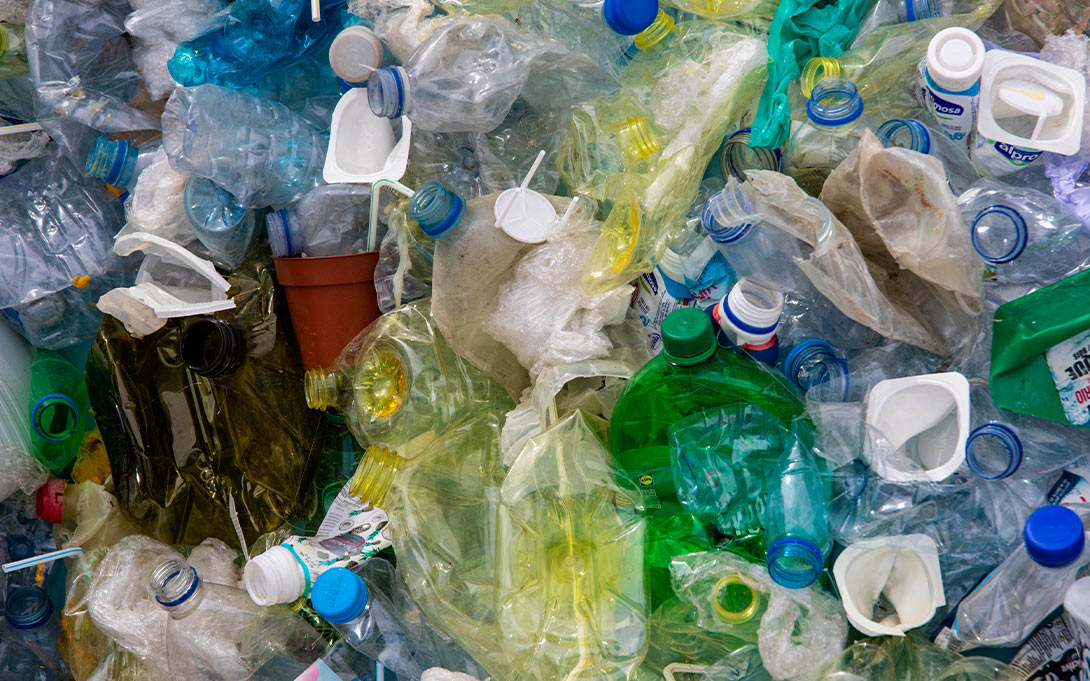
As climate change looms, policymakers must find ways to mitigate its effects. Many have turned to recycling in an effort to limit the amount of plastic in landfills, dumpsites, and the environment. In a new paper, “Curbing single-use plastic with behaviour change interventions,” Professor Kaitlin Raimi and her colleagues, Heather Barnes Truelove from the University of North Florida and Amanda R. Carrico from the University of Colorado-Boulder, argue that recycling itself is not enough – instead, we must work to reduce the demand for plastic.
Combining their expertise in public policy, psychology, and environmental studies, the authors provide behavioural interventions for policymakers to implement to help fight against plastic pollution.
“Behaviour change approaches work by targeting internal motivation for action and increasing the salience of plastic consumption. These approaches include changing the default behaviour in a situation (nudges), drawing attention to social cues (norms), providing information at the point of decision (education), and highlighting the moral implications of single-use plastic consumption (moral appeals),” they write. “While the world waits for international treaties, upgraded waste infrastructure, and improved business practices, behaviour change can be leveraged through relatively inexpensive and straightforward interventions.”
First, Raimi and her colleagues recommend educating the public on the impact of plastic usage.
“Interventions to inform and educate are thus needed,” they recommend. “These interventions should draw on best available information about the life cycle impacts of plastics and offer clear and actionable recommendations, including the most beneficial replacement items, best practices for disposing of various items, and the trade-offs inherent in behaviours to avoid plastics (such as impacts of food waste versus using a plastic carry-out container).”
But, education alone will not lower demand for plastics. Motivation and obstacle removal must also be implemented for these behavioural interventions to work effectively.
One option the authors provide to policymakers is to leverage social and financial rewards. For example, bag fees have proven successful, reducing plastic bag usage by 40-90%. In addition to financial incentives, moral and social incentives tend to impact behaviour.
“Understanding the values that motivate behaviour is critical, as are approaches that seek to foster moral or environmental values alongside the use of economic instruments,” Raimi and her colleagues say. “Interventions should also target the social environment. Even when they don’t recognize it, people tend to conform to the behaviour of the people around them.”
Additionally, targeting habits is an effective way to curb plastic usage, the authors claim. Because plastic usage is habitual to many, beliefs and attitudes are less likely to change behaviour.
“Interventions should make automatic behaviour more intentional through commitment-making strategies, nudges and prompts,” they write. “For example, prompts reminding people to bring reusable bags or cutlery before entering grocery stores and restaurants can be effective.”
Finally, Raimi and her colleagues remind policymakers that they cannot implement these behaviour change interventions without ensuring people have access to plastic-free options. Therefore, businesses must be included in these interventions.
“Policies designed to change individual behaviour should be coupled with regulations requiring businesses to take a bigger role in managing the waste their products produce, with an eye toward a circular plastic economy that incorporates waste into new products,” the experts write.
Raimi and her colleagues close their article by reminding policymakers that individual actions alone will not solve plastic pollution – they must be coupled with corporate and government efforts to reduce single-use plastic.
“By drawing on behavioural science, practitioners can target public understanding of the environmental implications of plastic and its alternatives, can provide motivation for people to reduce their single-use plastic consumption, and can help break bad habits that drive plastic use,” they conclude. “These individual-level interventions can be used safely without fear of undermining public support for larger policies or corporate efforts. Yet, to achieve maximum impact, separate campaigns must promote behaviours to help the public push for corporate responsibility and government regulation.”
This article was originally published in Nature Reviews: Earth & Environment. Read the entirety of “Curbing single-use plastic with behaviour change interventions."
